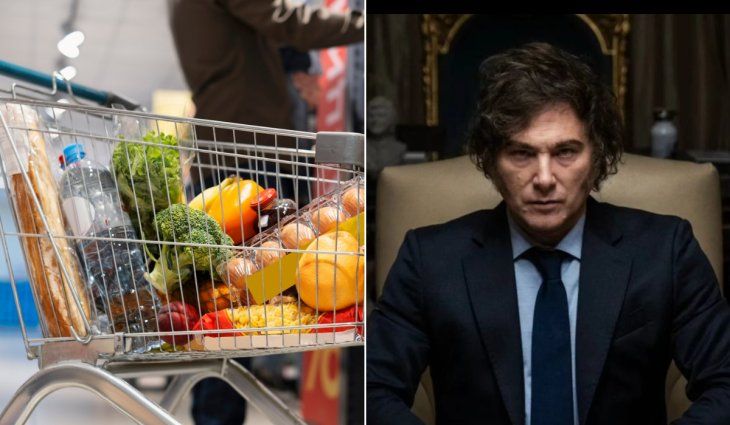During the course of the year, they distinguished themselves different stages that showed the effects on the purchases of Argentines, where in the first trimester There was an increase in inflation that remained at double-digit levels, although with a progressive decline: January 20.6%, February 13.2% and March 11%.
With the aim of achieving the fiscal balancein 2024, the Government trimmed transportation subsidies and the energyeliminating benefits for middle- and high-income sectors, as well as reducing transfers to the provinces, ending price controls that regulated a basket of basic products and making the conditions for importing mass consumption products more flexible.
inflation consumption supermarkets prices
Mass consumption currently presents a drop of 15%.
freepik.es
In it first trimester there was a consumption contraction of greater magnitude, which reached a drops around 30% both in supermarket and self-service sales, as well as in retail stores from different areas. Starting in April, inflation was reduced to single digits, until reaching the latest data of 2.7% in October, as measured by Consumer Price Index (IPC) of INDEC.
How the measures impacted the different sectors
The decisions that have been observed to date have generated a rearrangement in the availability of products and prices on the shelves. Within the October CPI, food, beverages and transportation had a rise of 1.2%below the general level; However, the cost of housing, water, electricity, gas and other fuels is the item that most increase with an increase of 5.4% monthly.
Large changes were observed in the household purchaseswhich reduced the budget supermarket, clothing, recreation, among others, as a result of the recomposition of rates and services that began to occupy more space in the accounts and salaries that did not match the magnitude of the inflation of the first quarter.
consumption industry.png

Mass consumption also registered a 30% drop in the first months of the year.
In the first three months of the year, the measurement of poverty arrived around 55% of the Argentine population. Towards the last quarter we began to see a deceleration in the consumption drop: SME retail sales rose for the first time in the year, with a 2.9% increase year-on-year in October, and accumulate a drop of 13.2% in the first ten months of the year.
Regarding the mass consumptionat the beginning of the year there was a drop around 30% in the purchase of the four categories that make up this segment: food, beverages, personal hygiene and cleaning. This sector presented a decline which, according to data from Nielsen and Scentia, has already hit the bottom and is around 15%.
What are the projections for next year?
In 2025expected partial recovery of what was lost this year, although there are factors that limit recoverysuch as the rise in prices of inelastic goods (recovery of real income absorbed by expenses on public services) and a fall in income.
He mass consumption continues in a restrictive contextwith very slow signs of recovery and growing competition from other consumer sectors, and in that context Juana Merloowner of the consulting firm ShopApp, stated: “Consumers have adjusted their habits: today they buy in small quantitiesthey look for promotions and competitive prices, and are more open to exploring options such as own brands or alternatives with a good price-quality ratio.
Merlo maintains at the same time that for economists and businessmen “the worst is over“, because inflation is showing signs of slowing down, and with that it is expected that the real incomes improve although we should not expect “a quick rebound.”
Javier Gonzalezcommercial leader of NielsenIQ, said that “it may slow down a little and close consumption by less than 17%, this is explained in 2024 mainly in the beverage categorieswhich are falling around 20%personal care and cleaning closer to 16% and food closer to 15%.”
Regarding next year’s projection, Gonzalez indicates that they estimate a consumption recovery in the order of 3% and that “this recovery will be generated more than anything by the comparison base that we have from this year, that for a increase in consumption; mainly positive data should start to appear closer to March, April.”
Source: Ambito
David William is a talented author who has made a name for himself in the world of writing. He is a professional author who writes on a wide range of topics, from general interest to opinion news. David is currently working as a writer at 24 hours worlds where he brings his unique perspective and in-depth research to his articles, making them both informative and engaging.




